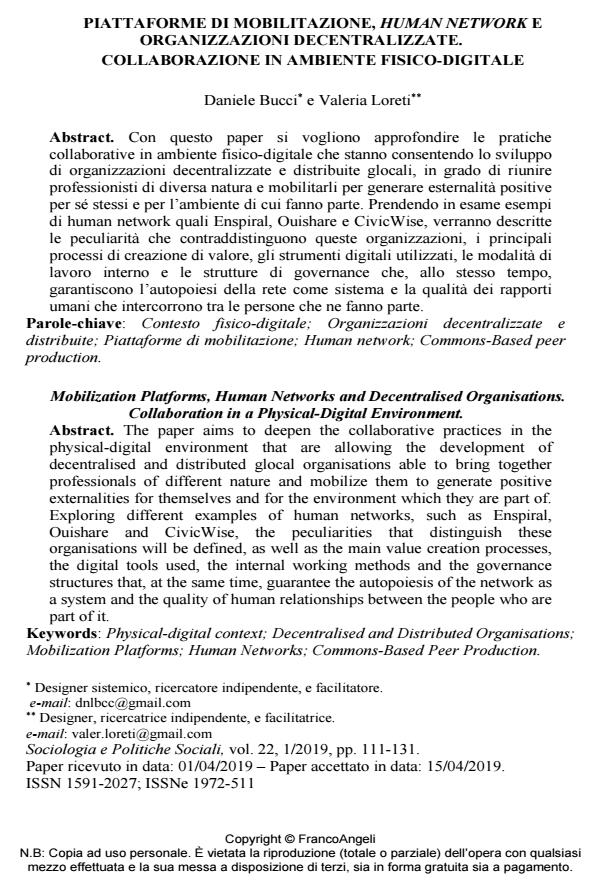Mobilization Platforms, Human Networks and Decentralised Organisations. Collaboration in a Physical-Digital Environment
Journal title SOCIOLOGIA E POLITICHE SOCIALI
Author/s Daniele Bucci, Valeria Loreti
Publishing Year 2019 Issue 2019/1
Language Italian Pages 31 P. 111-121 File size 239 KB
DOI 10.3280/SP2019-001006
DOI is like a bar code for intellectual property: to have more infomation
click here
Below, you can see the article first page
If you want to buy this article in PDF format, you can do it, following the instructions to buy download credits

FrancoAngeli is member of Publishers International Linking Association, Inc (PILA), a not-for-profit association which run the CrossRef service enabling links to and from online scholarly content.
The paper aims to deepen the collaborative practices in the physical-digital environment that are allowing the development of decentralised and distributed glocal organisations able to bring together professionals of different nature and mobilize them to generate positive externalities for themselves and for the environment which they are part of. Exploring different examples of human networks, such as Enspiral, Ouishare and CivicWise, the peculiarities that distinguish these organisations will be defined, as well as the main value creation processes, the digital tools used, the internal working methods and the governance structures that, at the same time, guarantee the autopoiesis of the network as a system and the quality of human relationships between the people who are part of it.
Keywords: Physical-digital context; Decentralised and Distributed Organisations; Mobilization Platforms; Human Networks; Commons-Based Peer Production
Daniele Bucci, Valeria Loreti, Piattaforme di mobilitazione, human network e organizzazioni decentralizzate. Collaborazione in ambiente fisico-digitale in "SOCIOLOGIA E POLITICHE SOCIALI" 1/2019, pp 111-121, DOI: 10.3280/SP2019-001006